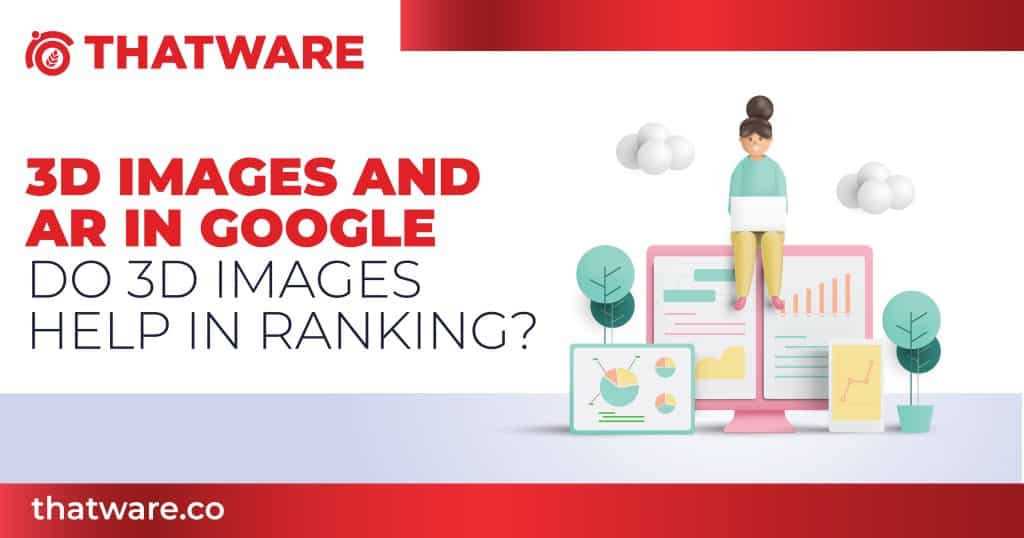SUPERCHARGE YOUR ONLINE VISIBILITY! CONTACT US AND LET’S ACHIEVE EXCELLENCE TOGETHER!
Do you enjoy seeing animal pictures on the internet? Are you a student and love visualizing physics concepts in 3D that help you understand better. You don’t need to take an advanced course or animal safari package to access these benefits. It can be all experienced from home by a simple Google search.

By 2020, Google has announced the integration of 3d Images and Augmented Reality as a feature in SERP. It allowed users to visualize 3D images and experience them from their smartphone.
How to Visualize 3D Images?
Despite the official announcement of the integration of 3D images with SERP, Google had been slow in incorporating different categories of images in its SERP.
The following types of categories are currently available for AR in SERP:
You can check the details in the following article:
https://support.google.com/websearch/answer/9817187
In order to experience 3D images, you have to do this using a smartphone. Search for a term like a lion. You will see a general knowledge graph opening with the description of a lion. The only difference is there is a section where you can experience a 3D African lion labeled as “View in 3D”.
If you click on the button, you can view a 3d model of your lion in your room using your camera. Just click on “View in your Space,” and it should show.
3D Lion in the Room
How to Embed a 3D Model on Your Site.
In order to get 3D models and images indexed in Google, you need first to have these assets on your website. The best way to create a 3D model is to use Blender, which is perhaps the easiest way to create professional 3D models. Or, if you don’t have the time to do it, you can hire a 3D model designer who can.
The embedding of the 3D model is done by simply entering an embedded code in HTML. First, you need a 3D image platform to publish your images. You can use SketchLab or SayDuck.com sites. After you have published these models, you can easily generate an Embed Code that can be applied directly to your page.
Generate embed code for 3D models using Sketchlab
How to Display 3D Images in SERP?
Create a Structured 3D Data Model
Google recognizes your site’s content using Structured Data and provides additional search result features for your pages.
When Google indexes your page, it scans the structured data and uses the information to enhance the user experience within the SERP with items like:
- Question That Is Frequently Asked (FAQ)
- How-to
- Business Details
- Answers to Questions
- Recipe
- and much more….
Just keep in mind that Google has the final say. Structured data can be present on your website, but it does not guarantee that Google will use it in its search results.
To display 3D objects in the SERP (or at least have a chance), you will need to use the structured data 3DModel and embed it in the code of your web page.
The following properties are necessary to generate the 3DModel schema:
@type: 3D
The name of your item as a model.
encoding: this is a list that must contain your 3D assets (or MediaObject)
Here are the required properties for each 3D object or MediaObject:
@type: MediaObject
content
Url: The address of your 3D object encoding.
Format: the encoding format
The 3D assets can be in the following formats:
glTF (GL Transmission Format)
The Universal Scene Description format, or USDZ, will assist Safari in recognizing your AR material.
There are other different 3D model formats. Let’s go over what a 3D model is and which format is suitable for the 3D SERP Feature.
The Best 3D Model File
A 3D model is an immersive media format that allows a viewer to examine every part of an item by zooming in, zooming out, and rotating.
3D models allow the user to see the 3D item in their present surroundings when used in conjunction with AR.
A 3D model file contains a lot of information, including as
Model’s geometry
Texture and color
Information about the scene and animations
For mobile devices, the format used to render a 3D model in real-time are the glTF and USDZ formats
Google recommends including at least one glTF file in order to display 3D in the SERP.
If you have 3D assets in formats like FBX, OBJ, or COLLADA, you must convert them to glTF or USDZ to render on mobile devices.
Finally, it is recommended that you mention both the glTF and USDZ formats in your script systems to maximize your chances of seeing your 3D in the SERP.
Now, let’s have a look at the script that will be included on your web page.
The way users interact with search engine results pages (SERP) has evolved rapidly in recent years, as web technologies continue to advance. One of the key trends transforming the digital landscape is the use of 3D images in search results, particularly in e-commerce and product listings. As Google and other search engines refine their algorithms, they now recognize 3D content as an important feature that can enhance the user experience and help businesses stand out in competitive markets.
Incorporating 3D images into your SERP listings can significantly improve engagement, boost your SEO performance, and increase conversions. However, there is a specific process to follow for your 3D images to be displayed correctly in search results. This guide will explain the key steps involved in getting 3D images to appear in the SERP, focusing on the importance of structured data, the right 3D file format, and best practices for embedding and indexing your 3D models.
Create a Structured 3D Data Model
The foundation for displaying 3D images in the SERP lies in the use of structured data. Structured data refers to the standardized format used to organize information on your website, making it easier for search engines like Google to read and understand the content. When Google indexes a page, it scans the structured data to identify relevant information, and this allows it to enhance the user experience by adding features such as:
- Frequently Asked Questions (FAQ)
- How-to guides
- Business details
- Recipe cards
- Reviews
- And more…
Structured data is what helps search engines organize and present additional features in the SERP. However, it is important to note that just because structured data is present on your website, it does not guarantee that Google will use it to enrich your search results. Google ultimately has control over how it uses the data, but including structured data significantly improves your chances of enhancing your listing.
For 3D images, you must incorporate specific structured data using the 3DModel schema. By adding this data to the HTML of your web page, you can provide Google with the necessary information to display your 3D images directly in the SERP, making your content stand out in search results and offering users an immersive experience.
Just keep in mind that Google has the final say. Structured data can be present on your website, but it does not guarantee that Google will use it in its search results.
To display 3D objects in the SERP (or at least have a chance), you will need to use the structured data 3DModel and embed it in the code of your web page.
The following properties are necessary to generate the 3DModel schema:
@type: 3D
The name of your item as a model.
encoding: this is a list that must contain your 3D assets (or MediaObject)
Here are the required properties for each 3D object or MediaObject:
@type: MediaObject
content
Url: The address of your 3D object encoding.
Format: the encoding format
The 3D assets can be in the following formats:
glTF (GL Transmission Format)
The Universal Scene Description format, or USDZ, will assist Safari in recognizing your AR material.
There are other different 3D model formats. Let’s go over what a 3D model is and which format is suitable for the 3D SERP Feature.
The Best 3D Model File
A 3D model is a complex and immersive media format that allows users to interact with an object by zooming, rotating, and viewing it from various angles. When integrated with Augmented Reality (AR), these 3D models can be placed within the user’s real-world environment, creating an even more engaging experience.
There are several key elements involved in a 3D model file:
- Model Geometry: The shape and structure of the object.
- Texture and Color: The surface appearance and materials applied to the model.
- Scene and Animation Information: Additional data on how the object behaves, moves, or reacts in a given environment.
For search engines like Google, these 3D files need to be in a format that is compatible with their indexing algorithms. When preparing 3D models for display in the SERP, it is crucial to use formats that are compatible with both desktop and mobile platforms. Two of the most widely supported formats for 3D rendering in web environments are glTF and USDZ.
glTF and USDZ: The Best Formats for 3D Models
Google recommends using the glTF format for rendering 3D models in real-time on mobile devices. This format is lightweight, supports efficient loading times, and is optimized for high-quality visual displays. GlTF stands for “GL Transmission Format,” and it’s commonly referred to as the “JPEG of 3D” due to its efficiency in storing 3D model data.
On the other hand, the USDZ format, developed by Apple, is another widely accepted format for rendering 3D models, especially on iOS devices. USDZ is also used for augmented reality experiences, making it an excellent choice for businesses looking to offer an AR-based 3D model experience for users.
If your existing 3D assets are in older file formats, such as FBX, OBJ, or COLLADA, you will need to convert these files into glTF or USDZ to render them properly on mobile devices and maximize the chances of your 3D content being displayed in the SERP.
Why glTF and USDZ?
- glTF: Known for fast loading times and efficient rendering, glTF is the industry standard for web-based 3D rendering.
- USDZ: Optimized for Apple devices, USDZ is widely used in AR applications and can provide an enhanced experience for mobile users.
It is best practice to include both the glTF and USDZ formats in your structured data and code to ensure that your 3D models can be displayed across a variety of devices and platforms, maximizing your content’s reach.
3D Model Structured Data Code Sample
Does it Help in Ranking?
No, they don’t. Google’s John Muller has explicitly commented on this, saying:
“No, we don’t. Everyone (who makes these features) wants to be able to say “it’s a ranking factor” to promote adoption, but IMO that’s short-term thinking which doesn’t help”
However, it cannot be ignored that Augmented Reality and 3D Images do stand out in the SERP and can be very well used to influence clickthrough rates for ecommerce products.
Why Should We Care about 3D Images in SERP?
A Unique Way to approach prospects
Educating your prospects is an important step in the purchasing process. And possibly one of the most important.
The first interactions with your brand are critical, as this is when your possible future customer will form an opinion about your firm.
Bringing your ideas to life might result in an emotional connection and a greater comprehension of what you have to offer.
Influence CTR for Ecommerce Products
The following example depicts the whole flow from when a user discovers a 3D and AR result to when he arrives at a website.
It’s a fascinating circumstance for e-commerce businesses.
After displaying the thing in augmented reality, the user may proceed to the product page and purchase the item.
Web 3.0 and the Future of 3D Images as NFTs
While discussing the benefit of 3D Images in our Web 2.0 world, we fail to realize that Web 3.0 is right around the corner. With the increasing popularity of Digital Art as NFTs, we can’t deny the possibility of a Web 3.0 environment where 3D images will be the most common form of imagery on a Web 3.0 search engine and Websites.
Perhaps then those will be the primary image types that will rank in the “Image” section of a search engine that supports Web 3.0 sites.
Read more: WEB 3.0, BLOCKCHAIN AND THE FUTURE OF THE INTERNET
Final Thoughts
The support of 3D Images and Augmented Reality is certainly new in Search Engines, and a lot more categories are yet to be added. Hence investing time and energy in creating 3D models of your product can certainly be a good move to earn revenue in the future, both from getting a better response from search engines and the prospect of its potential value on the Web 3.0 internet.

Thatware | Founder & CEO
Tuhin is recognized across the globe for his vision to revolutionize digital transformation industry with the help of cutting-edge technology. He won bronze for India at the Stevie Awards USA as well as winning the India Business Awards, India Technology Award, Top 100 influential tech leaders from Analytics Insights, Clutch Global Front runner in digital marketing, founder of the fastest growing company in Asia by The CEO Magazine and is a TEDx speaker and BrightonSEO speaker.


